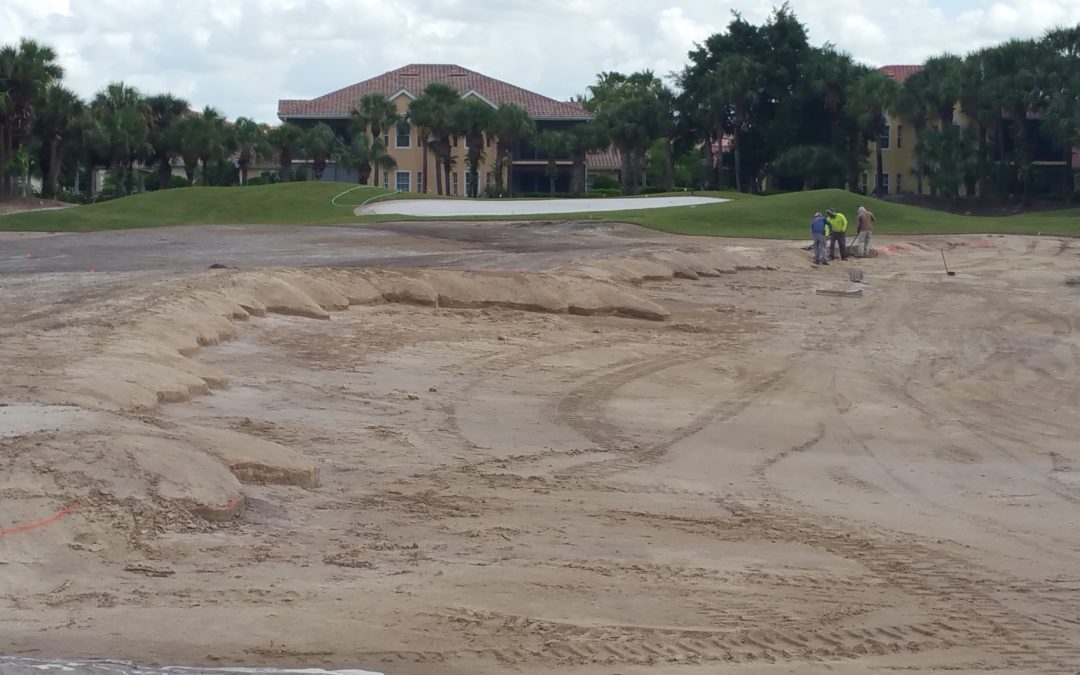A major renovation and green complex re-visioning is currently underway at Miromar Lakes Golf Club, Miromar Lakes, Florida, under the direction of Drew Rogers, ASGCA (J. Drew Rogers, Golf Course Architect). The course is scheduled to re-open Nov. 1, 2017.
Rogers began working with the Miromar team early last year to plan improvements enhancing the course identity while addressing other course infrastructure elements. “Today’s players demand excellent playing conditions, varied and strategic playing options as well as a strong identity and memorability throughout the golf experience”, states Rogers. “It’s been great fun working together with this team to enhance the course – it’s developing into something quite special.”
Now into its 17th year of operation, Miromar is converting its 419 Bermuda grass fairways to Celebration Bermuda grass. Teeing grounds are also being rearranged, leveled and realigned in a more formal, rectangular motif to address playability opportunities and better complement the layout’s improved visual and strategic qualities.
The primary focus of the project, however, is the greens and their immediate surrounds – each being reconstructed from the ground up. The new Tifeagle green surfaces are inspired with a more classic architectural feel and will be enlarged slightly to offer enhanced cupping locations. In addition to more dynamic contouring, the slopes, bunkering and other architectural features around each green have been re-imagined to better relate to existing hole strategies and offer varied recoveries and options for play.
Ken McMaster, PGA Director of Golf at Miromar Lakes identifies the Club’s unique approach to the project: “As a fundamental starting point, we knew that a complete greens replacement was inevitable. However, the opportunity to address playability concerns while simultaneously prioritizing the environment, the course’s overall aesthetic, and striving for a more classic architectural identity, is a tribute to our great team”.
More than 10 acres of maintained turf is being eliminated in an effort to use less water and reduce chemical applications along with the benefit of using less labor and energy. Pine straw, sand screenings and native plants are being incorporated throughout the new design to enhance the course visually – more of an authentic “South Florida feel.” Most of the newly installed native treatments are a result of re-purposing over 2,000 native cordgrass plants (from on-site) and more than 200 young sable palms – a production that is being managed in-house by Golf Course Superintendent Chris Bevers, GCSAA and his staff.

